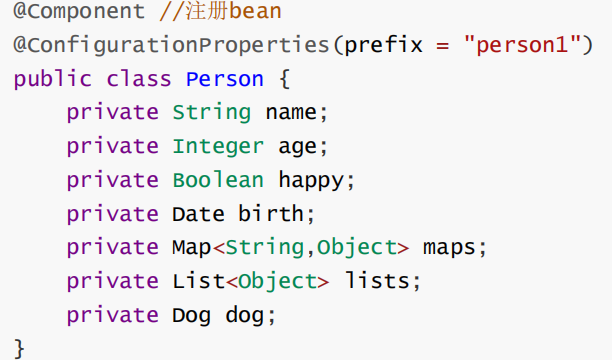1.队列的概念及结构
队列:只允许在一端进行插入数据操作,在另一端进行删除数据操作的特殊线性表,队列具有先进先出的特性
入队列:进行插入操作的一端称为队尾 出队列:进行删除操作的一端称为队头

2.队列的实现
队列也可以数组和链表的结构实现,使用链表实现更好一些,因为如果使用数组的结构,出队列在数组头上出数据,效率会比较低
这里是使用单链表实现,进行尾插头删

Queue.h
#pragma once
#include<stdio.h>
#include<stdlib.h>
#include<stdbool.h>
#include<assert.h>
#include<stdbool.h>
typedef int QDataType;
typedef struct QueueNode
{
struct QueueNode* next;//下一个
QDataType val;//当前节点的值
}QNode;
// 队尾插入
//void QueuePush(QNode** pphead, QNode** pptail, QDataType x);
// 队头删除
//void QueuePop(QNode** pphead, QNode** pptail);
//为了避免上面那样定义多个参数和二级指针,所以创建下面的结构体
typedef struct Queue
{
QNode* phead;//头指针
QNode* ptail;//尾指针
int size;
}Queue;
//初始化
void QueueInit(Queue* pq);
//销毁
void QueueDestroy(Queue* pq);
// 队尾插入
void QueuePush(Queue* pq, QDataType x);
// 队头删除
void QueuePop(Queue* pq);
// 取队头的数据
QDataType QueueFront(Queue* pq);
//取队尾的数据
QDataType QueueBack(Queue* pq);
// 获取队列中有效元素个数
int QueueSize(Queue* pq);
//检测队列是否为空,如果为空返回非零结果,如果非空返回0
bool QueueEmpty(Queue* pq);
队尾插入
//void QueuePush(QNode** pphead, QNode** pptail, QDataType x);
队头删除
//void QueuePop(QNode** pphead, QNode** pptail);
// 队尾插入
void QueuePush(QNode** pphead, QNode** pptail, QDataType x);
// 队头删除
void QueuePop(QNode** pphead, QNode** pptail);如果出现上面那样需要定义多个参数和二级指针,可以创建下面的结构体
//如果出现需要定义多个参数和二级指针,可以创建下面的结构体
typedef struct Queue
{
QNode* phead;//头指针
QNode* ptail;//尾指针
int size;
}Queue;
Queue.c
初始化
//初始化
void QueueInit(Queue* pq)
{
assert(pq);
pq->phead = NULL;
pq->ptail = NULL;
pq->size = 0;
}
销毁
//销毁
void QueueDestroy(Queue* pq)
{
assert(pq);
//cur 当前节点
QNode* cur = pq->phead;
while (cur)
{
//保存下一个节点位置
QNode* next = cur->next;
free(cur);//释放当前节点
cur = next;//指向下一个节点
}
pq->phead = pq->ptail = NULL;
pq->size = 0;
}队尾插入
// 队尾插入
void QueuePush(Queue* pq, QDataType x)
{
assert(pq);
QNode* newnode = (QNode*)malloc(sizeof(QNode));
//如果malloc失败
if (newnode == NULL)
{
perror("malloc fail");
return;
}
newnode->next = NULL;
newnode->val = x;//因为现在要尾插的是x
//如果ptail为NULL,说明一个节点都没有
if (pq->ptail == NULL)
{
pq->phead = pq->ptail = newnode;
}
else
{
pq->ptail->next = newnode;
//把新节点变成新的尾节点
pq->ptail = newnode;
}
//如果不加size++那么实现QueueSize时就需要遍历
pq->size++;
}
队头删除
// 队头删除
void QueuePop(Queue* pq)
{
assert(pq);
//判断有没有节点
assert(pq->size != 0);
//只有一个节点
//phead的下一个节点为空
if (pq->phead->next == NULL)
{
free(pq->phead);//释放头节点指向的“节点”
//将头节点和尾节点只为NULL
pq->phead = pq->ptail = NULL;
}
else // 多个节点
{
//先保存头节点的下一个节点的位置
QNode* next = pq->phead->next;
free(pq->phead);//释放头节点指向的“节点”
pq->phead = next;//再指向下一个节点的位置
}
pq->size--;
}取队头的数据
// 取队头的数据
QDataType QueueFront(Queue* pq)
{
assert(pq);
//head为空没有数据取
assert(pq->phead);
return pq->phead->val;
}取队尾的数据
//取队尾的数据
QDataType QueueBack(Queue* pq)
{
assert(pq);
//ptail为空没有数据取
assert(pq->ptail);
return pq->ptail->val;
}获取队列中有效元素个数
// 获取队列中有效元素个数
int QueueSize(Queue* pq)
{
assert(pq);
return pq->size;
}检查是否为空
//检测队列是否为空,如果为空返回非零结果,如果非空返回0
bool QueueEmpty(Queue* pq)
{
assert(pq);
return pq->size == 0;
}3. 完整代码
#include"Queue.h"
//初始化
void QueueInit(Queue* pq)
{
assert(pq);
pq->phead = NULL;
pq->ptail = NULL;
pq->size = 0;
}
//销毁
void QueueDestroy(Queue* pq)
{
assert(pq);
//cur 当前节点
QNode* cur = pq->phead;
while (cur)
{
//保存下一个节点位置
QNode* next = cur->next;
free(cur);//释放当前节点
cur = next;//指向下一个节点
}
pq->phead = pq->ptail = NULL;
pq->size = 0;
}
// 队尾插入
void QueuePush(Queue* pq, QDataType x)
{
assert(pq);
QNode* newnode = (QNode*)malloc(sizeof(QNode));
//如果malloc失败
if (newnode == NULL)
{
perror("malloc fail");
return;
}
newnode->next = NULL;
newnode->val = x;//因为现在要尾插的是x
//如果ptail为NULL,说明一个节点都没有
if (pq->ptail == NULL)
{
pq->phead = pq->ptail = newnode;
}
else
{
pq->ptail->next = newnode;
//把新节点变成新的尾节点
pq->ptail = newnode;
}
//如果不加size++那么实现QueueSize时就需要遍历
pq->size++;
}
// 队头删除
void QueuePop(Queue* pq)
{
assert(pq);
//判断有没有节点
assert(pq->size != 0);
//只有一个节点
//phead的下一个节点为空
if (pq->phead->next == NULL)
{
free(pq->phead);//释放头节点指向的“节点”
//将头节点和尾节点只为NULL
pq->phead = pq->ptail = NULL;
}
else // 多个节点
{
//先保存头节点的下一个节点的位置
QNode* next = pq->phead->next;
free(pq->phead);//释放头节点指向的“节点”
pq->phead = next;//再指向下一个节点的位置
}
pq->size--;
}
// 取队头的数据
QDataType QueueFront(Queue* pq)
{
assert(pq);
//head为空没有数据取
assert(pq->phead);
return pq->phead->val;
}
//取队尾的数据
QDataType QueueBack(Queue* pq)
{
assert(pq);
//ptail为空没有数据取
assert(pq->ptail);
return pq->ptail->val;
}
// 获取队列中有效元素个数
int QueueSize(Queue* pq)
{
assert(pq);
return pq->size;
}
//检测队列是否为空,如果为空返回非零结果,如果非空返回0
bool QueueEmpty(Queue* pq)
{
assert(pq);
return pq->size == 0;
}


















